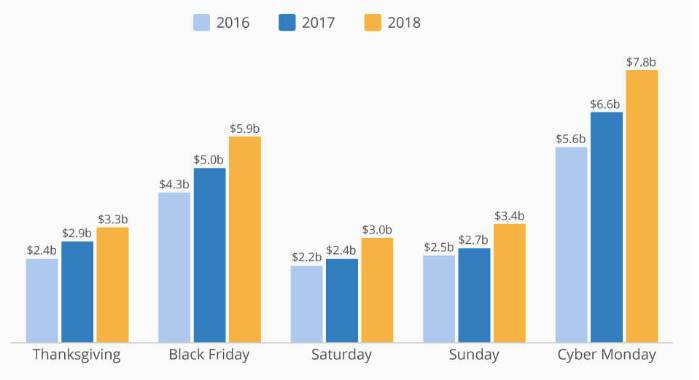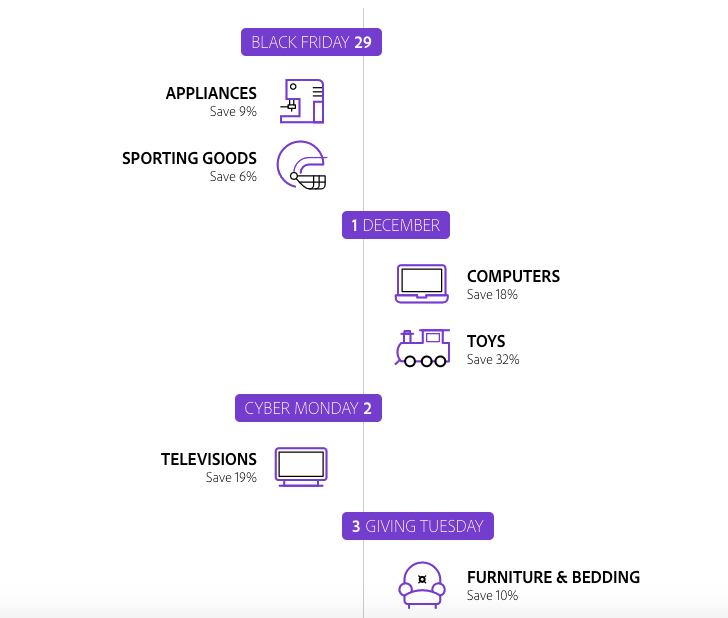The biggest shopping event of the year is a scant week away, and no, it isn’t Black Friday. The Monday following Thanksgiving, also known as Cyber Monday has long surpassed Black Friday as the biggest shopping day of the year. Originally created by retailers to encourage online shopping, it has grown by leaps and bounds over the years.
Honey claims that the 2017 edition of Cyber Monday showed average savings of 21% per user, per purchase, a significant improvement over its competitors. The gradual shift in the mindset of customers towards online shopping and retail has been a boon to Cyber Monday, and Adobe Analytics claims that record sales of over $7.9 billion were made last year. Deals begin at 12 a.m. EST on the first Monday after Thanksgiving, and run around the clock. This years’ edition is to be held on December 2nd.

How did it start?
Online retailers in early 2004 noted that sales often reached their peak on the Monday after Thanksgiving, when millions of customers fresh off their Thanksgiving weekend returned to their high-speed internet connections at work, ready to buy what they liked. The term ‘Cyber Monday’ was coined by businesswoman Ellen Davis of the National Retail Federation and made its debut on November 28th, 2005. The UK introduced Cyber Monday in 2009 and it remains extremely popular in the holiday season to this day.

Some interesting numbers
Cyber Monday has become enormously successful, showing year-on-year growth of almost 17% on average. Over 67.4 million people purchased something on this day in the US alone. Adobe estimates that the average customer spent $138 on Cyber Monday in 2018, a YoY increase of 6.1%. Smartphones grabbed the lion's share of the activity, accounting for 27.7%. The report also claimed that Cyber Monday was the best time to purchase TVs and Desktops, with discounts of 18% and 17.6% respectively.
The retail giant Amazon claimed that the 2018 edition was the biggest shopping day in its history, at the time, citing ‘record breaking’ statistics based on number of items sold. The firm claimed over 18 million toys and 13 million fashion items sold.
An increasing number of customers have begun to turn to their mobile phones to make purchases, browse for deals and share information regarding their holiday shopping. Salesforce claims that mobile phones had 67% of traffic share and 49% of order share in 2018. Shoppers also made greater use of shipping options like buy online and pick up in store. Adobe claims that these so-called click-and-collect orders were up 65% over the 2017 edition. This form of shopping opens a new door, allowing traditional brick-and-mortar dealerships to take advantage of the booming online season. It also indicates that retailers are increasingly fulfilling consumer expectations for integrated ‘offline-online’ experiences.
What does it mean for retailers?
Cyber Monday represents the biggest sales opportunity in the business year, and companies prepare for the event months in advance. Offline retailers often use the holiday season as an opportunity to make their first entrance into the digital market, while veteran online retailers use it as a chance to reinvigorate their brand name, promote new products, and make additions to their customer base. Naturally, on-site promotions constitute 25.3% of search traffic, closely followed by paid search and email at 25.1% and 24.2% respectively.
Cyber Monday is indeed a key part of the November holiday season, exhibiting a meteoric year-on-year growth. As online retailers grow and evolve, one can only imagine how Cyber Monday will evolve with them.
Interested in retail or pricing? Drop your email here and we’ll get back to you!